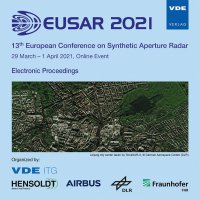Focusing of new generation SAR Spotlight data through the Efficient Time-Domain Back-Projection
Konferenz: EUSAR 2021 - 13th European Conference on Synthetic Aperture Radar
29.03.2021 - 01.04.2021 in online
Tagungsband: EUSAR 2021
Seiten: 6Sprache: EnglischTyp: PDF
Autoren:
Tataranni, Francesco; Gallipoli, Antonella (INNOVA Consorzio per l'Informatica e la Telematica srl, Italy)
Inversi, Paolo (Telespazio S.p.A., Italy)
Inhalt:
Recent innovations in spaceborne SAR missions, in terms of ultra-fine Spotlight resolution and capability of sensing in complex squinted geometries, clash with the limits of classical image formation algorithms. This article presents the quality performance obtained by an efficient implementation of the time-domain back-projection, suitable for operational scenario, where the precise accommodation of high topography variations and local effect of the squint is accurately handled working on a pixel basis, overcoming the limitations imposed by the Frequency Domain processing constraints. The time domain back projection solution has actually a hybrid design: the focusing of the signal in across-track direction uses a frequency-domain approach, while in the along-track direction the focusing is performed in the time-domain. The focusing core of the signal in the azimuth direction uses a Back-Projection approach, which allows to obtain excellent performances where the traditional algorithms in the frequency-domain can have severe limitations, but it will dramatically worsen the temporal performance making the processing algorithm generally not suitable for operational purposes. For this reason, a sub-aperture processing optimization has been proposed that guarantees significant efficiency improvements primarily for not squinted images combined with the use of range multi look processing techniques in order to obtain a comparable reduction of the computational complexity when applied to data representative of highly squinted geometry. During algorithm design and implementation phases the performance of the algorithm have been verified and validated mainly by simulation. The stability and the robustness of the focusing core in a real world scenario has been finally verified on X-Band SAR real data acquired in the Spotlight Enhanced mode. In this article further improvements introduced in the time domain focusing algorithm in order to handle tropospheric path delay effects and bistatic effects are also presented. The results and performance obtained by the proposed algorithm in terms of both focusing and localization performance and execution time performance are widely discussed and analysed using both simulated and real data.


